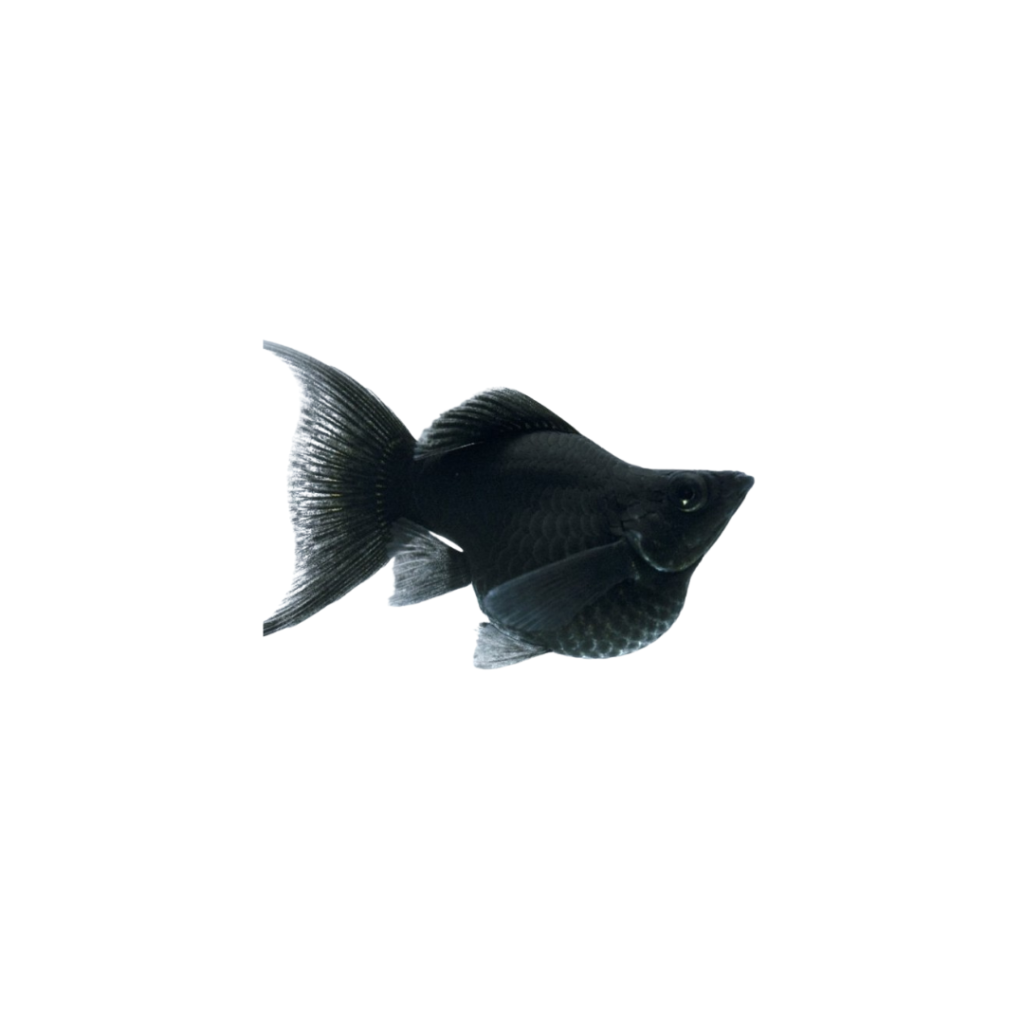Guppy Blue Diamond
Poecilia reticulata

Description
The Guppy Blue Diamond is a stunning and striking variety of guppy, known for its vibrant blue coloration and shimmering metallic sheen. This variety features a body that is typically a bright, almost iridescent blue with a subtle diamond-like shine that enhances its overall appearance. The body is often metallic, with blue diamonds or sparkles across the scales, giving it a radiant and eye-catching look. The tail fins can display additional patterns, often in shades of blue, green, or yellow, contributing to its dazzling visual appeal.
Habitat Origin
The Guppy Blue Diamond is a selectively bred variety of the common guppy (Poecilia reticulata), which is native to freshwater environments across Central and South America, particularly in countries like Venezuela, Trinidad, and Guyana. Guppies have been bred in captivity for generations to emphasize unique and vibrant color patterns, with the Blue Diamond variety being a result of selective breeding to enhance the blue coloration and iridescence.
Aquarium
Ideal Number in Aquarium: Best kept in groups of at least 4-6 individuals to encourage natural schooling behavior and reduce stress.
Favorite Food

The Guppy Blue Diamond is an omnivore and will accept a variety of foods. They can be fed flake food, micro pellets, and live or frozen foods such as brine shrimp, daphnia, and bloodworms. They also enjoy vegetable-based foods like spirulina, blanched spinach, and lettuce. A varied diet is important to maintain their health and vibrant coloration. Foods with added carotenoids can enhance their coloration, especially their blue hues.
Behavior:
Guppy Blue Diamonds are active, peaceful, and social fish. They are often seen swimming in the middle and upper regions of the tank, where they are active and interact with other guppies. Guppies are schooling fish, so they do best when kept in groups, as this allows them to feel secure and display natural behaviors.
Special Care:
Guppy Blue Diamonds are hardy and adaptable fish, making them an excellent choice for beginners. However, they require stable water conditions to thrive. Regular water changes, good filtration, and proper tank maintenance are essential to keep the water clean and avoid issues like algae growth or poor water quality. They should be kept in a tank with plenty of hiding spots and plants to allow for natural behavior.
Compatibility with Other Fish:
The Guppy Blue Diamond is peaceful and can be kept with other small, non-aggressive species such as neon tetras, harlequin rasboras, small catfish like Corydoras, and other small livebearers. They should not be kept with larger or more aggressive fish, such as bettas, cichlids, or goldfish, as these fish may harass or eat the guppies.
Breeding Tank Setup
For successful breeding, a separate 10–20 gallon tank is recommended to maintain optimal water parameters and protect eggs and fry from other fish. Black Bee Shrimp thrive in soft, slightly acidic water with a pH of 6.0–6.5 and temperature between 22–26°C. A gentle sponge filter prevents fry loss and keeps water clean. Using nutrient-rich substrates like aquasoil and plants such as Java moss and Anubias provides hiding spots and promotes biofilm growth, essential for shrimp health.
Conditioning for Breeding
Condition shrimp with a varied, protein-rich diet including algae wafers, shrimp pellets, blanched vegetables, and occasional protein-rich foods like bloodworms or brine shrimp. Maintain water quality through regular 10–20% weekly water changes using dechlorinated water. Avoid sudden or large water changes to prevent stress and ensure a stable environment that supports breeding readiness.
Spawning Process
Black Bee Shrimp reach sexual maturity around 3–6 months. Females carry 20–40 fertilized eggs beneath their abdomen, visible as bright yellow or green clusters for 3–4 weeks until hatching. There’s no need to separate males and females post-mating, but disturbance should be minimized during egg incubation to maximize survival.
Fry Care & Feeding
Eggs hatch in 3–4 weeks, producing tiny, translucent fry that initially feed on biofilm and microorganisms in the tank. Supplement their diet with powdered shrimp food or algae wafers appropriate for their size. Maintain excellent water quality with small daily water changes and stable temperatures, while avoiding predators and disturbances that can harm fry.
Additional Notes on Breeding
Females are larger, rounder, and darker when carrying eggs; males are slimmer and smaller. Stress negatively affects breeding success, so avoid sudden water parameter shifts, aggressive tankmates, and overcrowding. A calm, stable tank environment is crucial to ensure healthy reproduction and fry development.
